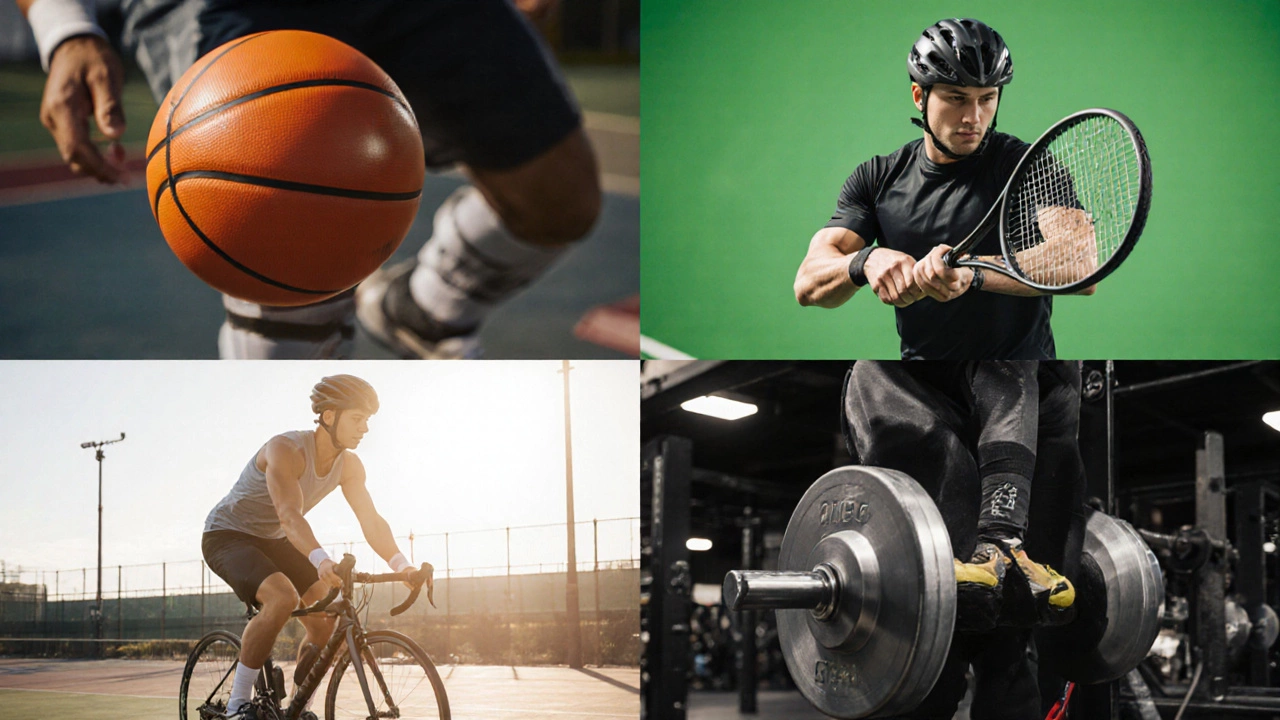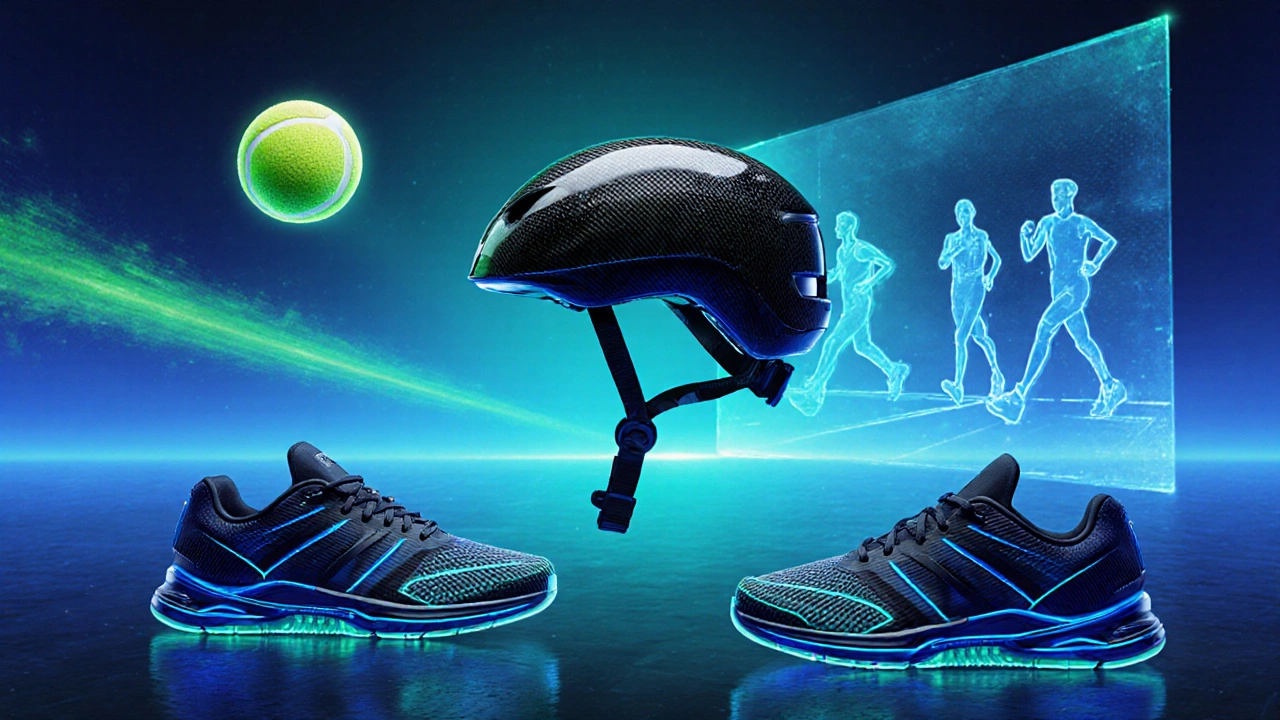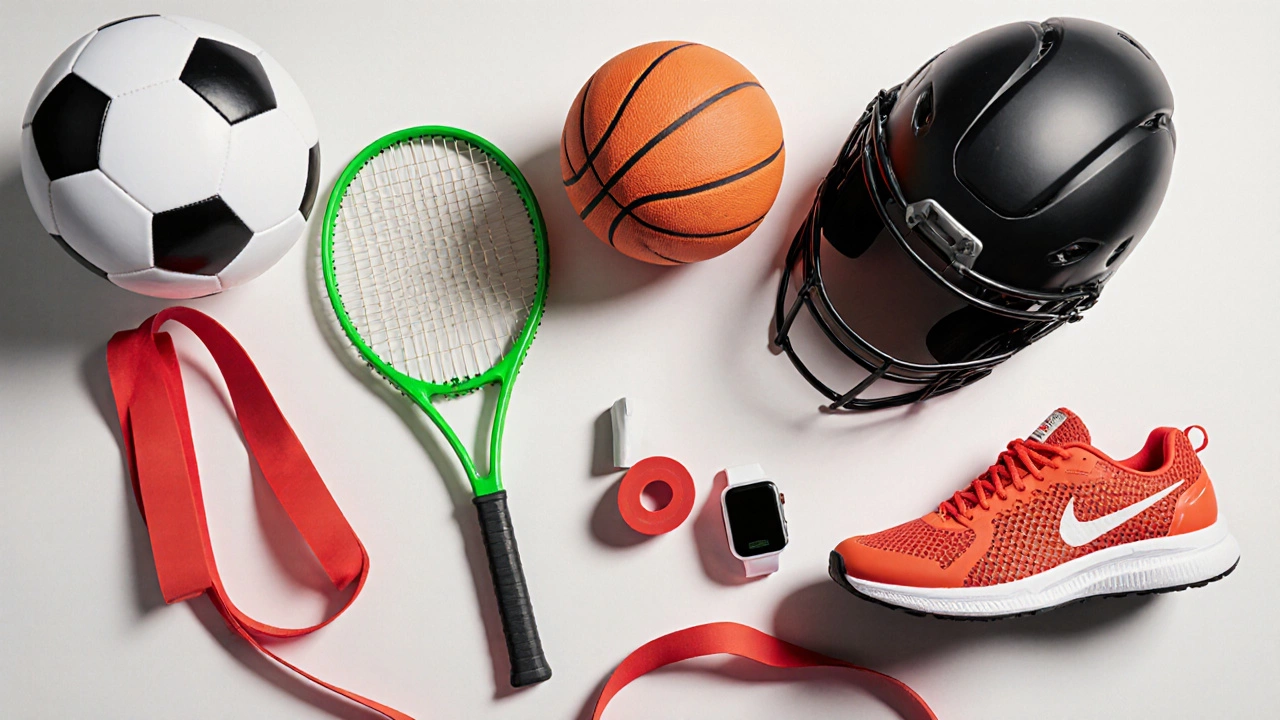Sports Equipment Selector
Choose Your Sport
Select a sport to see what equipment you need and how to choose the right items.
Soccer
Must-have: Soccer ball, shin guards, soccer cleats
Tennis
Must-have: Tennis racket, tennis ball, tennis shoes
Running
Must-have: Running shoes, moisture-wicking apparel, heart rate monitor
Basketball
Must-have: Basketball, basketball shoes, elbow pads
Cycling
Must-have: Bicycle, helmet, cycling shoes, gloves
Weightlifting
Must-have: Dumbbells, barbell, weightlifting shoes, knee wraps
Recommended Equipment
Select a sport to see what equipment you need.
Key Categories
Equipment is categorized by type including balls, rackets, protective gear, and more.
How to Choose the Right Equipment
- Follow the rules: Check official rulebooks for equipment specifications.
- Consider your skill level: Beginners often need durable, forgiving gear.
- Set a budget: Prices vary widely based on materials and quality.
- Look for certifications: CE, ISO, or sport-specific approvals ensure safety.
When you hear the term sports equipment is the collective name for all tools, gear, and apparel used to play, train, or support any sport, you’re basically talking about the stuff that makes the game possible. Whether you’re stepping onto a basketball court, hitting a tennis serve, or lifting weights at the gym, you’ll find a piece of gear that’s essential to the activity.
Key Takeaways
- Sports equipment covers anything that helps an athlete perform, stay safe, or improve skills.
- It’s split into categories like balls, rackets, protective gear, fitness machines, apparel, and training aids.
- Choosing the right gear depends on sport, skill level, budget, and safety standards.
- Proper maintenance extends the life of equipment and keeps performance consistent.
- Knowing the correct terminology helps you shop smarter and communicate clearly with coaches and teammates.
Defining the Term
In everyday language, people often swap sports gear and sports apparatus for sports equipment. Technically, the definition is broader: it includes any ball (inflated or solid sphere used in games like soccer, basketball, and volleyball), racket (hand‑held device with a stretched string bed for sports such as tennis, badminton, and squash), protective padding, footwear, clothing, and even electronic devices like heart‑rate monitors.
Major Categories of Sports Equipment
Breaking the umbrella down helps you see what you actually need for any given activity. Below are the most common groups, each with typical examples and the sports that rely on them.
| Category | Typical Items | Primary Sports | Key Material |
|---|---|---|---|
| Ball | Soccer ball, basketball, volleyball | Soccer, basketball, volleyball, tennis | Leather, synthetic leather, rubber |
| Racket | Tennis racket, badminton shuttle, squash racket | Tennis, badminton, squash | Graphite, carbon fiber, aluminum |
| Protective Gear | Helmets, shin guards, mouthguards | Cycling, football, rugby, hockey | Foam, polycarbonate, Kevlar |
| Fitness Equipment | Dumbbells, resistance bands, treadmills | Gym workouts, home training | Steel, rubber, polyester |
| Apparel & Footwear | Compression shirts, running shoes | Running, basketball, yoga | Mesh, leather, synthetic composites |
| Training Aids | Agility cones, speed ladders, VR simulators | All sports (skill drills) | Plastic, metal, digital sensors |

Detailed Look at Each Category
1. Balls
A ball (any spherical or near‑spherical object used in a sport for scoring or play) is arguably the most recognizable form of sports equipment. The size, weight, and surface texture are carefully regulated. For instance, a regulation golf ball must weigh no more than 45.93grams and have a diameter of at least 42.67mm. In contrast, a basketball is 22cm in diameter and must bounce within a specific range when dropped from a set height. Knowing these specs helps you avoid penalties in official matches.
2. Rackets and Bats
The racket (a handheld frame with strings to strike a ball or shuttlecock) family also includes bats, paddles, and clubs. A tennis racket’s head size, string tension, and grip width can shift a player’s control and power dramatically. Meanwhile, a baseball bat’s barrel diameter and material (wood vs. aluminum) affect swing speed. Choosing the right configuration is a mix of personal feel and sport‑specific regulations.
3. Protective Gear
Safety‑first equipment-often called protective gear (items designed to absorb impact and reduce injury risk)-ranges from helmets in cycling to shin guards in soccer. Modern helmets are built with polycarbonate shells and EPS foam liners, meeting standards set by bodies like the Snell Memorial Foundation. The level of protection you need depends on the sport’s contact intensity and the player’s age.
4. Fitness Equipment
When the workout happens inside a gym, you’re dealing with fitness equipment (machines, free‑weights, and accessories used for strength, cardio, or flexibility training). Popular choices include dumbbells, kettlebells, rowing machines, and resistance bands. An industry report from 2024 shows that home‑gym sales rose 28% year‑over‑year, driven by compact, multi‑function devices like adjustable dumbbell sets.
5. Apparel & Footwear
Clothing and shoes aren’t just for comfort-they enhance performance. apparel (sport‑specific clothing that manages moisture, temperature, and muscle support) such as compression tights can improve blood flow. Footwear is engineered for traction and shock absorption; a running shoe for trail runs includes deeper lugs and a stiffer sole compared to a road‑running shoe.
6. Training Aids
Modern athletes rely on training aids (tools that help develop specific skills, speed, or coordination) like agility cones, speed ladders, and even virtual‑reality simulators. A 2023 study of elite sprinters showed a 6% improvement in start times after incorporating electronic timing gates into drills.
How to Choose the Right Sports Equipment
Picking gear isn’t a one‑size‑fits‑all job. Here’s a quick decision‑making flow you can follow:
- Identify the sport and its rules. Official rulebooks list minimum and maximum specs for equipment.
- Assess your skill level. Beginners often benefit from durable, forgiving gear; advanced players may prioritize performance‑oriented specs.
- Set a budget. High‑end carbon fiber rackets can cost $300+, while entry‑level aluminum models sit under $100.
- Check certification. Look for symbols like CE, ISO, or sport‑specific approvals (e.g., FIFA Quality).
- Try before you buy. Many specialty stores let you test a racket’s swing weight or a shoe’s cushioning on a treadmill.
Remember, the most expensive item isn’t always the best fit for you. Prioritize comfort, safety, and compliance with regulations.
Maintenance Tips to Extend Lifespan
Even the toughest gear degrades over time. Follow these simple habits:
- Clean after each use. Wipe down balls and gloves with a mild disinfectant to prevent odor and bacterial buildup.
- Store in climate‑controlled environments. Extreme heat can warp a tennis racket’s frame; cold can make foam padding brittle.
- Inspect for wear regularly. Look for cracks in helmets, frayed strings on rackets, and worn tread on shoes.
- Rotate equipment. If you train daily, having two pairs of shoes lets each pair recover, extending their usable life by up to 30%.

Future Trends in Sports Equipment
Technology is reshaping what we call sports equipment. Smart sensors embedded in shoes can relay stride length and ground‑reaction force to a mobile app, letting athletes fine‑tune their technique in real time. 3‑D‑printed helmets promise custom‑fit protection with less material waste. Even biodegradable tennis balls are entering the market, reducing plastic pollution on courts worldwide.
Frequently Asked Questions
What is the official term for “sports gear”?
The industry‑standard term is sports equipment. It covers everything from balls and rackets to helmets and training devices.
Do I need different equipment for indoor vs. outdoor sports?
Yes. Outdoor gear often includes weather‑resistant materials and extra durability, while indoor equipment focuses on lightweight design and low‑impact surfaces.
How can I tell if my equipment meets safety standards?
Look for certification marks such as CE, ISO, or sport‑specific labels like ASTM for protective gear. Manufacturers usually list compliance on the product tag or packaging.
Is expensive equipment always better?
Not necessarily. Higher price often reflects materials or brand, but performance gains depend on your skill level and how well the gear fits your needs.
How often should I replace my sports equipment?
Replacement intervals vary: running shoes last 300‑500 miles, helmets should be swapped after any hard impact, and strings on rackets typically need re‑stringing after 10‑15 hours of play.
Next Steps
If you’re ready to upgrade or buy new gear, start by making a list of the categories you need for your sport. Check for certifications, read user reviews, and if possible, test the items in a store. Remember to care for each piece, and you’ll enjoy better performance and fewer injuries for years to come.
